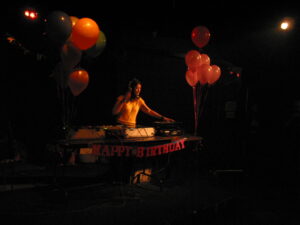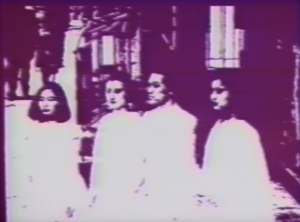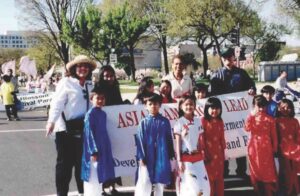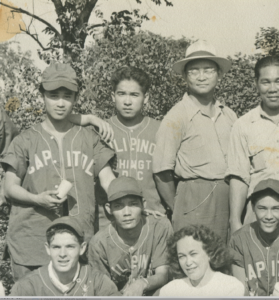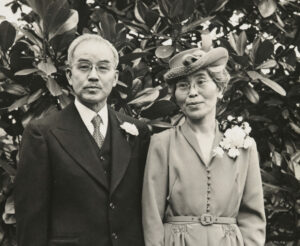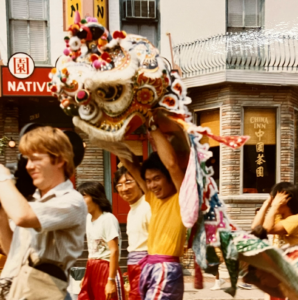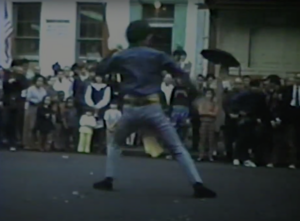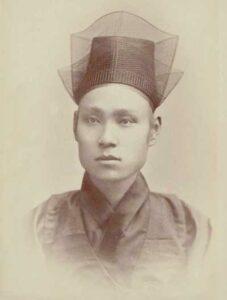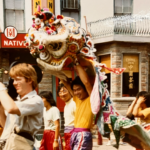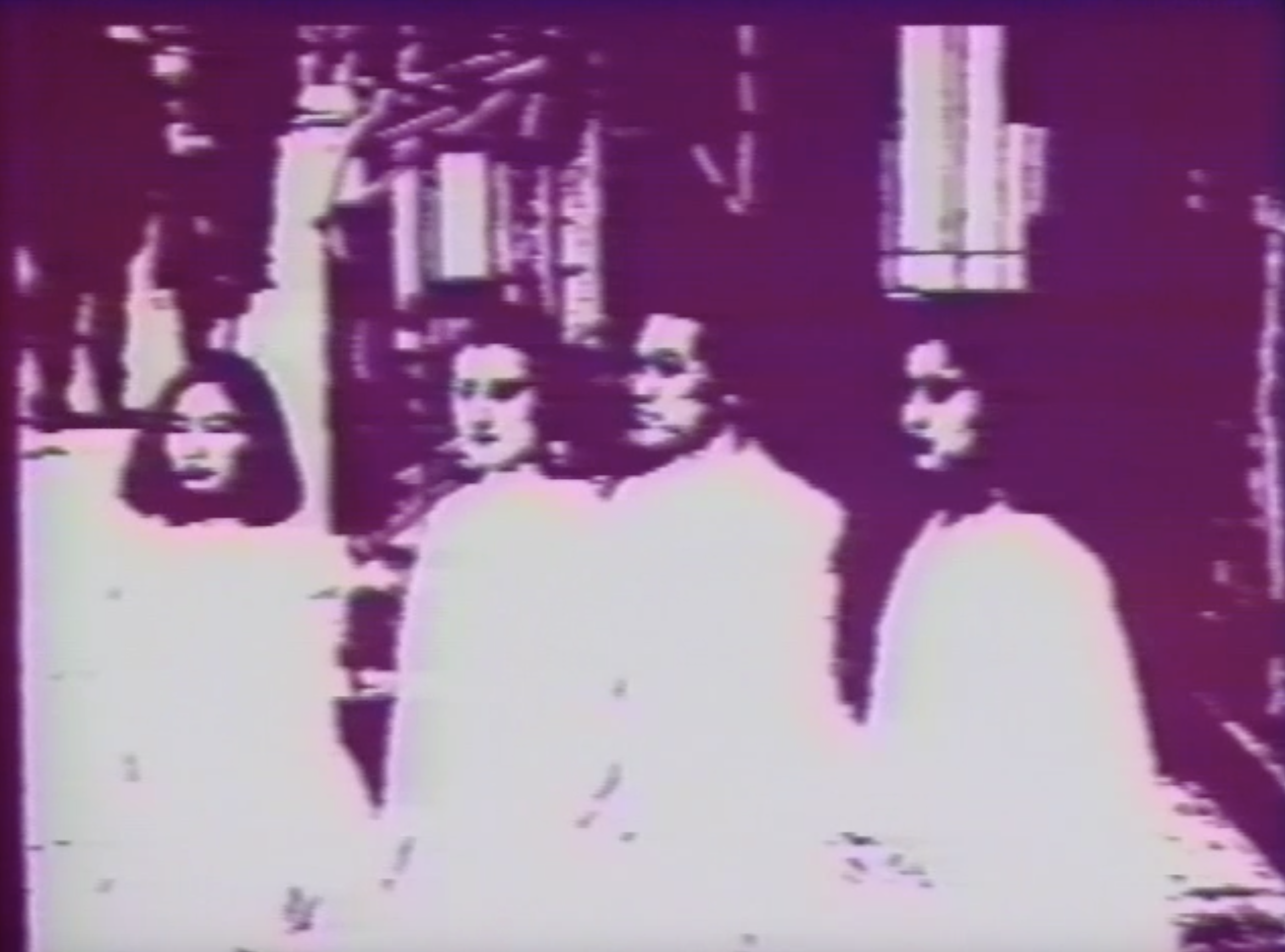
In the early 1990s, my dance company, Dana Tai Soon Burgess Dance Co., was just getting started. Our dancers were all Asian American from varying backgrounds—Chinese American, Korean American, Japanese American, Vietnamese American, and AmerAsian. We wanted to dance together, to claim a place to call our own in D.C., to build community as young people. We often danced on the sidewalks and in vacant lots in Chinatown. We would dance all year long, even in the winter when it snowed. We did several video projects that documented our search for community in D.C. “Remembering Chinatown” was one of our videos.
We were already deeply connected to D.C. and Chinatown by this time. We hung out there on the weekends; ate dim sum together; went to the Martin Luther King, Jr. Library and checked out dance books and books about our histories; looked at art at the National Portrait Gallery; wandered the streets and studied old buildings like the Chinese Consolidated Benevolent Association. We loved window shopping in the old Chinese mercantile shop near H Street and the Chinatown Friendship Archway and looking at the Peking ducks and other food items hanging in windows. At that time there was still an active Chinese community that lived there. Chinatown was vibrant, authentic, and uniquely ours. But we could feel change coming, gentrification was on the horizon.
What resonates with me 35 years later is the spirit of our young Asian American sense of resilience; our quest to claim a place and community to call home through the medium of modern dance. In watching the video today, I think about how our dancers were drawn together by the need to share our diverse cultural stories. By sharing through art, by being present, we built a community of Asian Pacific American advocates.
Dana Tai Soon Burgess is a leading American choreographer and cultural figure known worldwide as the “Diplomat of Dance.” In 1992, he founded the Dana Tai Soon Burgess Dance Company (DTSBDC), Washington, DC’s preeminent modern dance company. DTSBDC’s projects began in DC’s Chinatown.
Burgess’s work explores intersectional identities—the flowing together of diverse perspectives, histories, and traditions that result in shared audience understanding. He has served as a Cultural Ambassador for the U.S. State Department for over two decades, an appointment he uses to promote international cultural dialogue through “the global language of dance.” Burgess has been awarded three Fulbright Senior scholarships for dance and recently received two prestigious awards – the Selma Jeanne Cohen Dance Lecture Award and the Aaron Stein Memorial Award.
In 2016, Burgess was named the Smithsonian Institution’s first-ever Choreographer-in-Residence. From 2016-2023 he created new works inspired by museum exhibitions, participated in public discussions about dance and art and designed educational programming.The exploration of dance and art is deeply rooted for Burgess. The son of two visual artists he has always approached the stage as a canvas, and the dancers as brush strokes. In 2003, Burgess was one of only three artists featured in the Smithsonian Institution’s “A Korean American Century” – an exhibition highlighting the history and achievements of Korean Americans in the US. He was also highlighted in “Dancing the Dream,” the Smithsonian’s first exhibition on American dance. Three portraits of Burgess are part of the permanent collection of the Smithsonian and his family archive resides in the American History Museum. He has created works for The National Gallery of Art, The Noguchi Museum, The National Museum of Asian Art, The National Building Museum, The Kreeger Museum, The Baltimore Museum of Art, and The UNM Art Museum to name a few.
Burgess and DTSBDC have received numerous awards and acclamations including the Outstanding Emerging Artist at the 12th Annual Mayor Arts Award (1994), the Mayor’s Arts Award for Excellence (2005), seven Metro D.C. Dance Awards, and the Pola Nirenska Award which celebrates trailblazers and leaders of the dance community. Burgess received the Paul Ré Peace Prize for bridging communities around the globe through choreography. He has served as a Mayoral appointed commissioner for the DC Commission on Asian and Pacific Islander Americans and the DC Commission on the Arts and Humanities.
Burgess is the author of Chino and the Dance of the Butterfly: A Memoir by University of New Mexico Press and the editor of and contributor to Milestones in Dance History by Routledge/Francis&Taylor. He is the host of Slantpodcast.com which focuses on the Asian American arts experience.
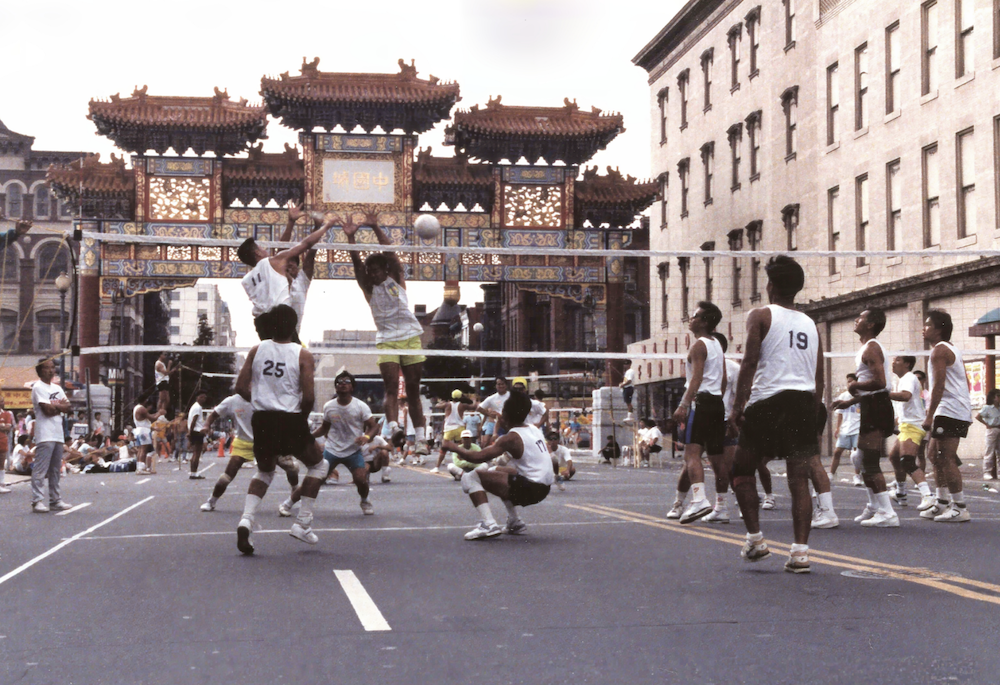
North American Nine-Man Chinese Invitational Volleyball Tournament, Washington, D.C., about 1989.
Throughout Washington, D.C. Chinatown’s history, artists, organizers, and community members like Dana Tai Soon Burgess have enlivened the neighborhood by claiming the streets and other public spaces to exhibit their passions. This photo from Sightlines was taken on H Street NW by Penny Lee and features athletes playing Nine-Man, a sport that continues to convene Chinatown communities across North America for annual tournaments.
